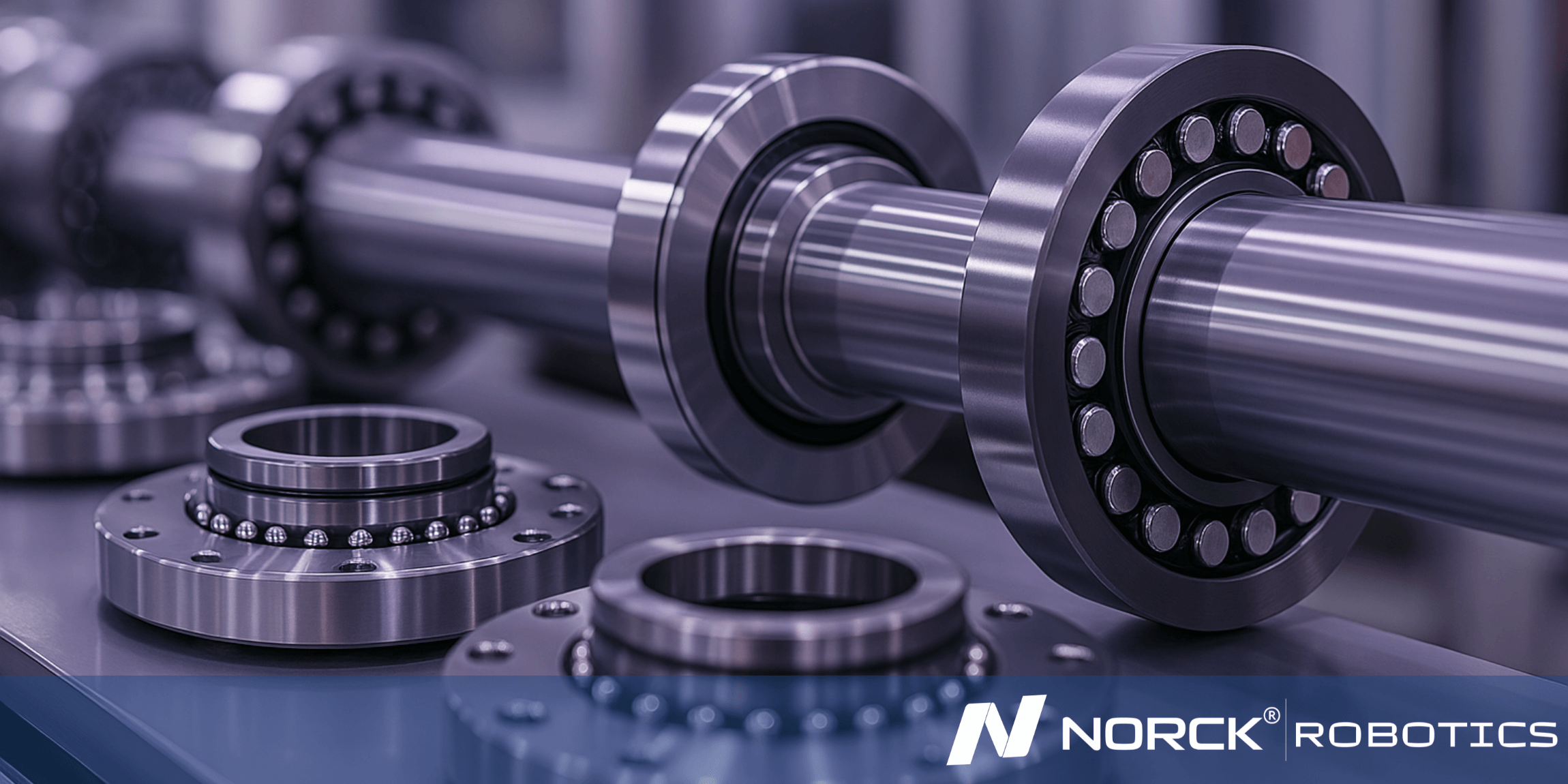

One of the high-precision bearings is applied to robot joints for reducing friction, supporting different types of loads, and allowing smooth and accurate movements. These bearings are made up of precision ball bearings that could be radial or angular contact types and roller bearings that could be cylindrical or tapered. Crossed roller bearings are also important in applications requiring heavy load and moments of complex nature and hence for demanding robotic uses. Usage of such high precision bearings is limited and so even Japanese manufacturers claim that their performance depends on classifications of precision, i.e., ISO P5 or P4, and the materials used such as stainless steel and ceramic, which affect the life, corrosion resistance, and operational accuracy of the bearing.
Ready to automate your future? Get a quote from Norck Robotics now!
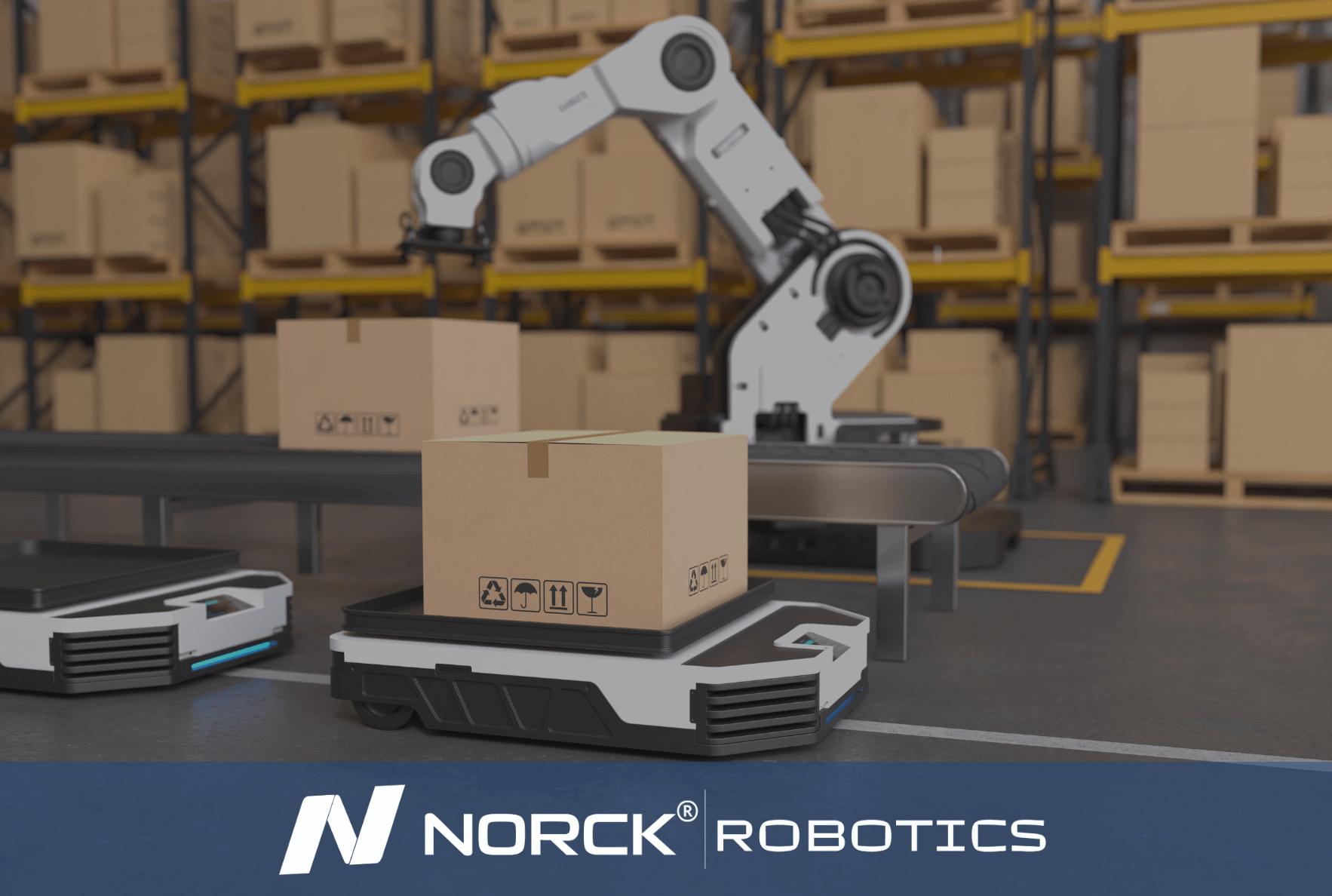
Norck Robotics specializes in providing unique robotic automation and engineering solutions designed to meet the specific operational needs of each client. Our expertise covers a wide range of industries and applications.
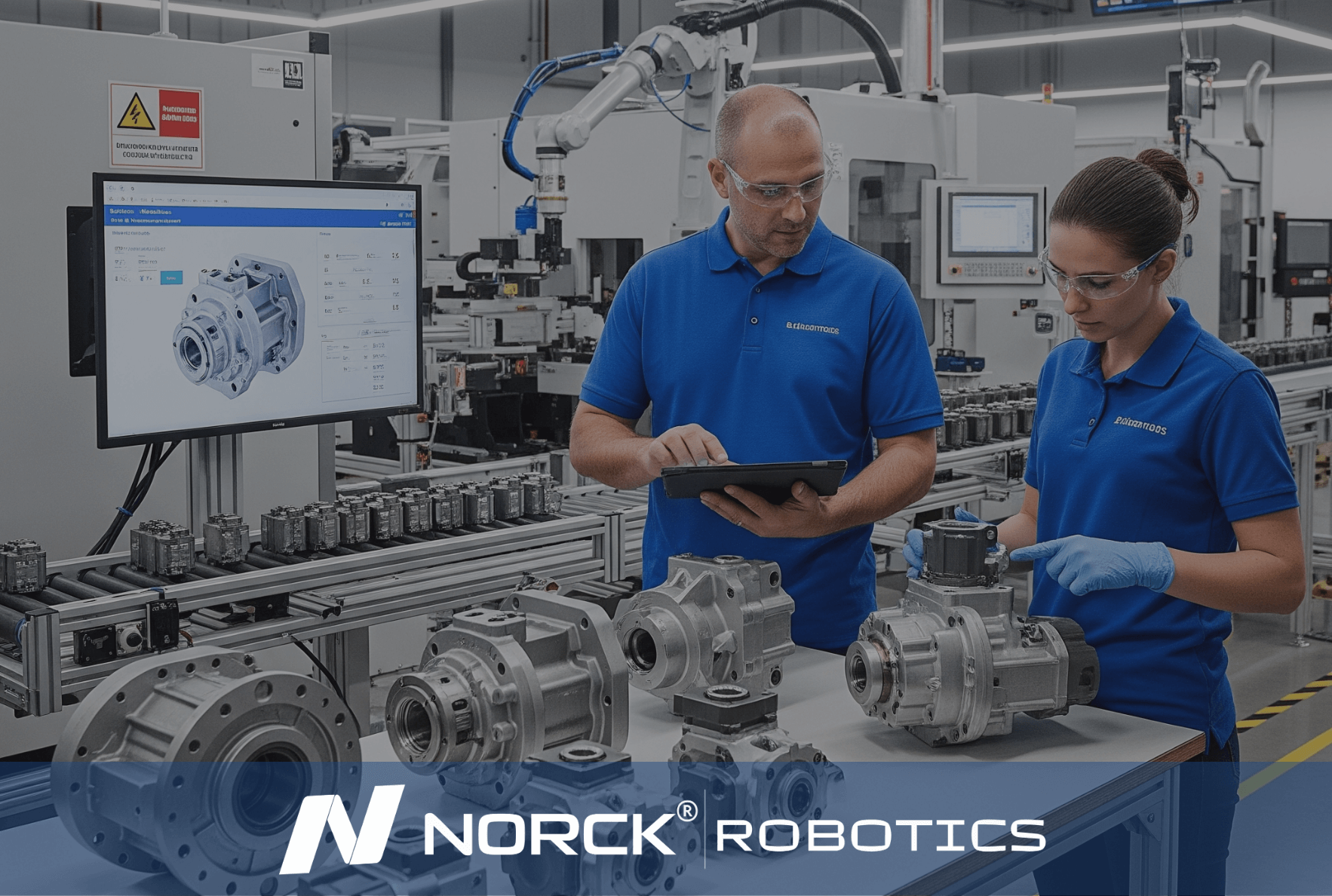
Norck Robotics delivers turnkey robotic automation and engineering solutions tailored to your specific needs across various industries.

Whether you need a single robotic cell prototype or full-scale factory automation, Norck Robotics engineers are ready to collaborate with you to bring your concept to life.
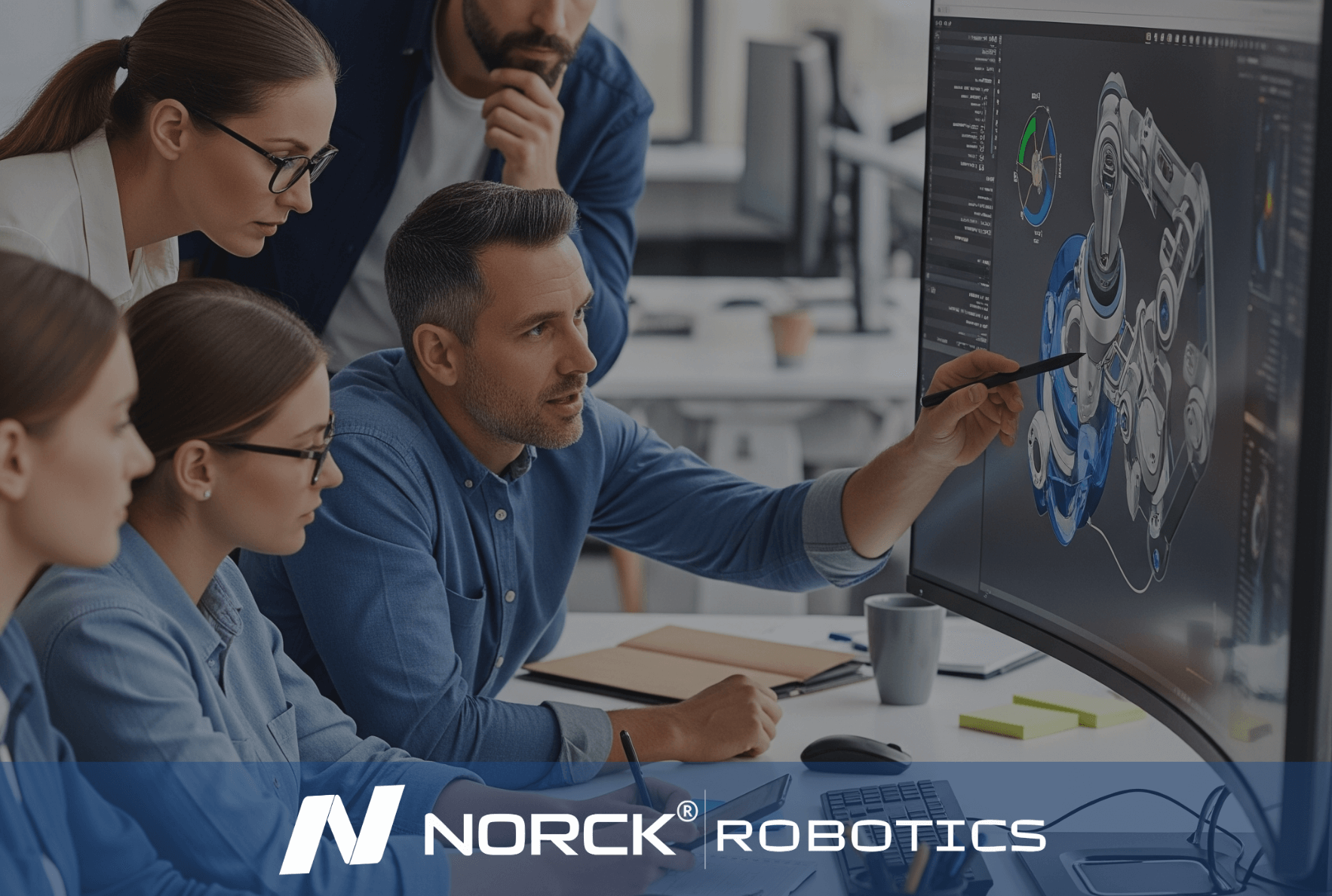
Norck Robotics engineers analyze your existing processes to provide feedback that enhances efficiency, cost-effectiveness, and productivity for robotic integration.
Bearings for robot joints contribute to smooth, efficient, precise operation of robotic systems. Their key operate with:
Bearings greatly minimize that friction between two moving components to enable smooth movement on joints and lessen wear and energy losses.
These loads may be radial, axial, or moment types so that stability and structural integrity can be maintained under stresses they will undergo during operation.
By minimizing metal-to-metal contact and efficiently distributing loads on surfaces, bearings enhance robot joint life unless very fast or under heavy loads.
Bearings in their own right also aid in noise attenuation and vibration, thus improving overall robot performance and user comfort.
High-precision bearings (such as precision ball and crossed roller bearings) give control to motions requiring high accuracy, assemblies, inspection, or surgical robotics.

In addition to its own expert engineering team, Norck Robotics provides access to a network of hundreds of top-tier system integrators, robot manufacturers, and component suppliers across the United States, Germany, and Europe.

Working with Norck Robotics reduces dependency on manual labor, increases production consistency, and secures your operations against unforeseen disruptions, quality issues, and fluctuations. This enhances your company's supply chain resilience.
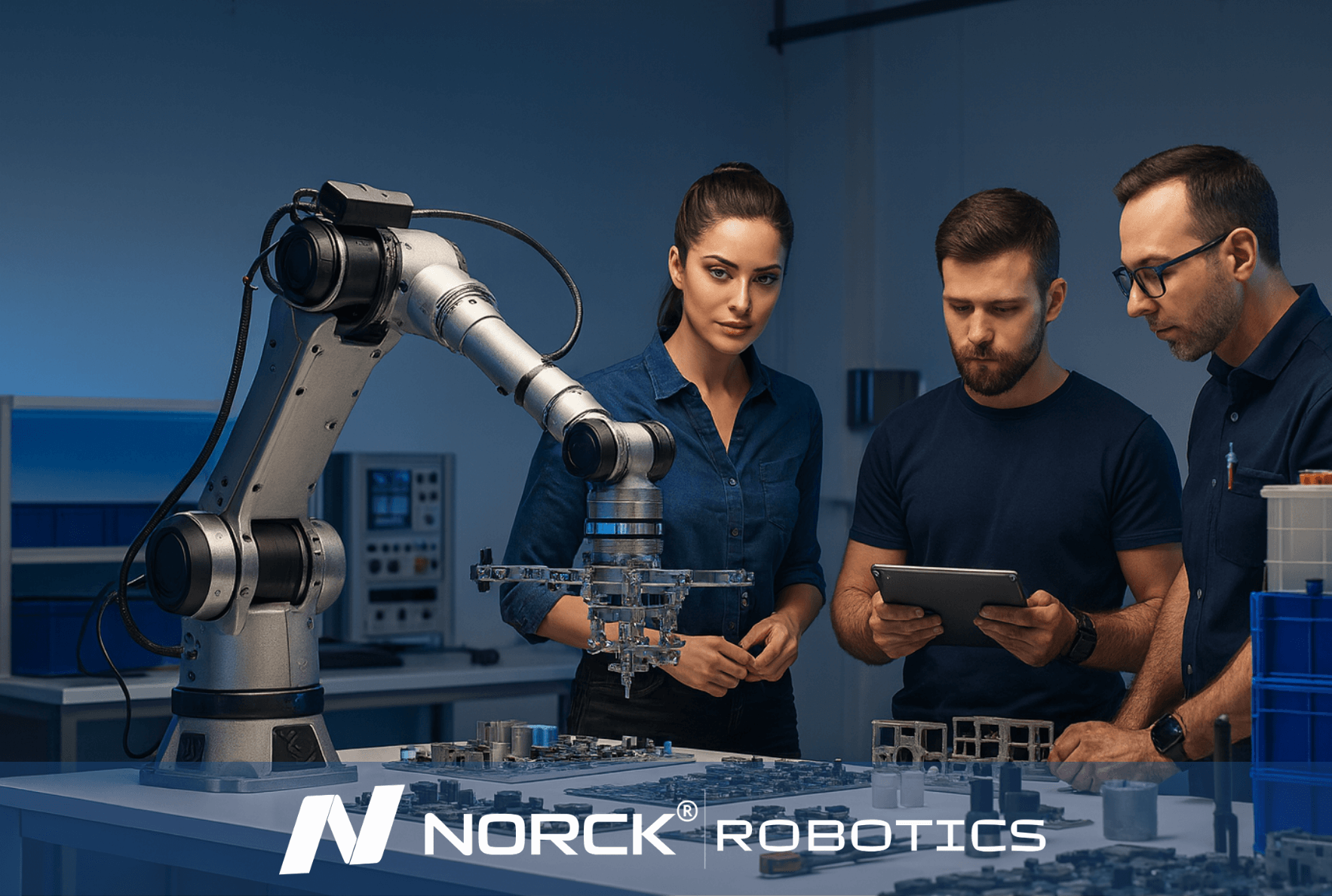
Norck Robotics advances digital automation by developing custom-designed robot grippers, advanced vision systems, and innovative simulation software. With an AI-driven, data-centric approach, it enables smarter system design, optimal performance, and predictive maintenance solutions.
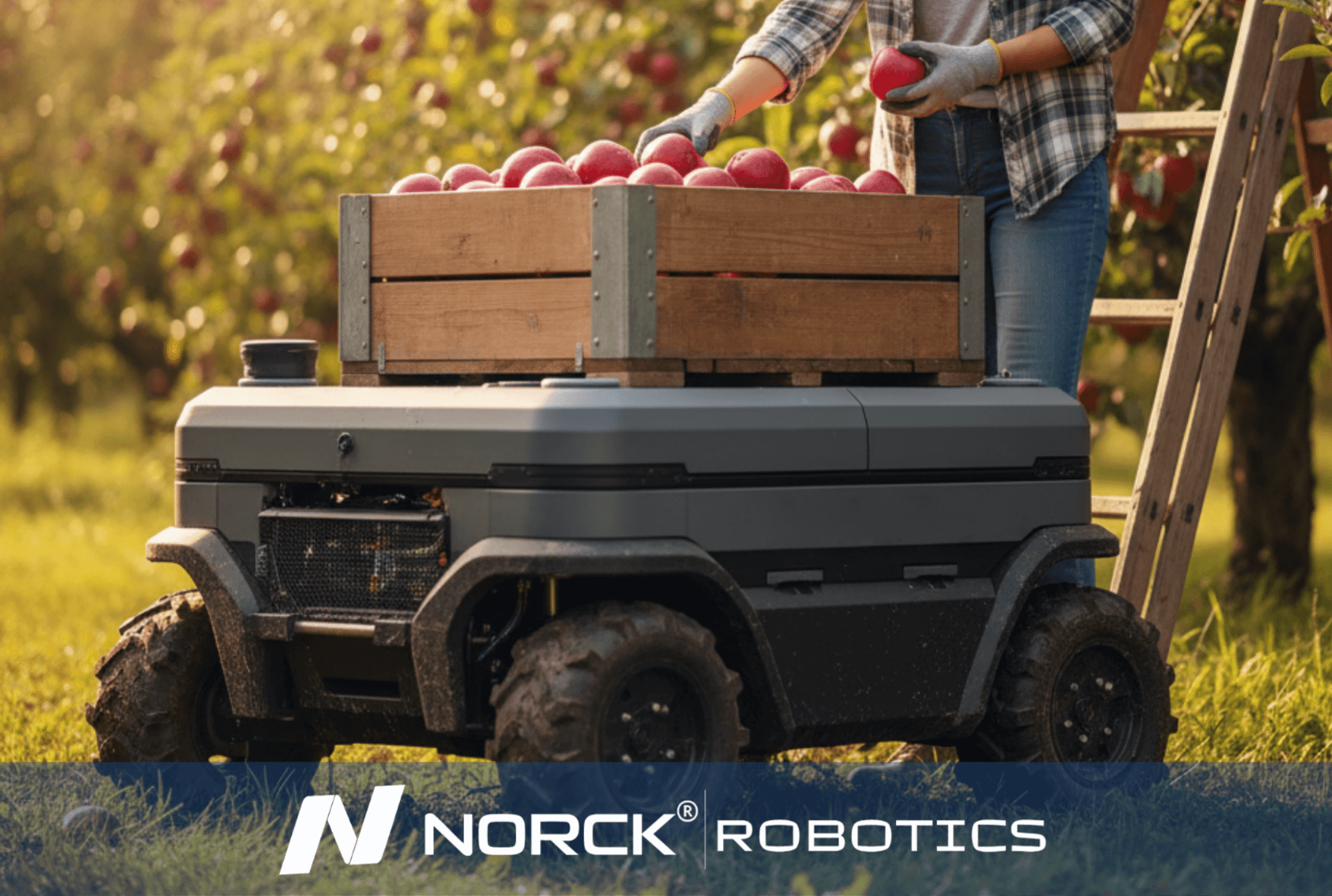
Norck Robotics encourages its partners to be carbon-neutral by reducing energy consumption and material waste through the efficiency of robotic automation, and prioritizes environmentally conscious suppliers.
Depending on the load requirements of the application, the accuracy requirements of the joint, and the space constraints, different types of bearings may be selected for robotic joints. The following list indicates when each type of bearing will be selected at the joint.
Ball bearings may be selected with: Low to moderate loads, high speeds and low friction are important.
Applications: General use robotics, electric motors, and joints requiring smooth continuous rotation.
Precision advantage: Precision ball bearings have excellent rotational accuracy and should be considered when building compact joints.
May be selected when: High radial loads or combined radial and axial loads are significant, and portions of the operation require moderate speeds.
Applications: Heavier duty robotic arms, heavy duty industrial manipulators, and gear boxes.
Durability advantage: Greater surface contact enables the roller bearings to withstand substantially higher forces during service with a lengthened service life.
May be selected when: Very high precision, stiffness, and performance loading (axial, radial, and moment all at once) are all of greater value or of importance.
Useful for: High precision bearings used for robotics wrists, hands, rotary stages, medical robots, vision guided systems, etc.
Space savings: Crossed roller bearings are compact and can accept multi-directional loading with minimal space.
Each type of bearing has some advantages and disadvantages with respect to load capacity, precision, size, and speed of rotation and understanding the best type for the application you are designing for is essential to the optimum performance of your robot.